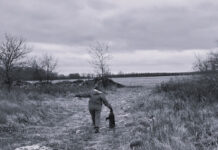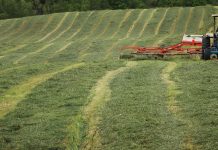Clear skies and 80 degrees welcomed Linda and me when we arrived in Cape May, New Jersey, Oct. 14, and spectacular weather continued for nine days.
Cape May
High temperatures in the upper 60s to low 70s and bluebird skies exceeded all our hopes and expectations. We could not have ordered better weather.
The next three days brought one day of rain and stiff breezes before idyllic conditions returned.
We booked this visit back in April after a week-long visit to see spring birds. One of the attractions for this visit was the Cape May Fall Festival, which ran Oct. 20-22.
Out of state license plates filled the parking lot at Cape May Point State Park. Each day field trips targeted southbound migrating birds: raptors, sea birds, ducks, geese, and a variety of songbirds.
As part of the Festival, visitors could participate in four ongoing official migratory counts: the Avalon Seawatch, the Morning Flight Songbird Count, the Cape May Hawkwatch, and the Monarch Monitoring Project.
Bird watching. A few days before the Festival began, Linda and I spent some time at the State Park.
From the hawk-watching platform we picked up turkey and black vultures, bald eagles, osprey, sharp-shinned hawks, merlins, and kestrels.
Overhead hundreds of tree swallows swept the sky for flying insects. Later we birded the boardwalk by the platform.
We found dozens of monarch butterflies and literally hundreds of yellow-rumped warblers. The warblers feasted on the fruits and berries that hung heavily from the trees. On the pond next to the platform, rafts of waterfowl fed and rested.
The most obvious species were Canada geese and mallards, but black ducks, gadwalls, wigeons, shovelers, green-winged teal, and pintails were easy to spot.
From the beach we watched as a variety of sea birds passed from north to south. Some flew too far offshore to identify, but gannets, surf scoters, and buffleheads came within reach of our binoculars.
On the beach a variety of gulls and shorebirds caught our attention. Ring-billed and herring gulls were loud and obvious, but laughing gulls, usually the most conspicuous gulls on summertime south Jersey beaches, were few and far between.
Black-bellied plovers and greater and lesser yellowlegs picked their way along the wet sand. But the most entertaining bird of the trip played tag with the surf.
Sanderlings danced ahead of the incoming surf, then picked up food exposed as the waves retreated. Feeding sanderlings look like undulating waves of shorebirds.
Butterflies
Clearly, the festival focused on bird migration, but another abundant migrant competed for our attention.
Monarch butterflies were everywhere — in downtown Cape May, around the apartment where we stayed, and all along the dunes protecting the beaches.
While we birded from the hawk-watching platform, several monarchs fluttered by every minute. Between the butterflies and the birds, it was hard to keep track of anything.
That’s why formal hawk, seabird, and monarch counts take place this time of year. In fact, that was a big reason we came to Cape May.
Just across the yard from our apartment, a stand of yellow butterfly bush straddled a fence. Every afternoon between two and four o’clock direct sunlight flooded the area.
Monarchs, red admirals, and painted ladies quickly appeared and stayed until the sun dropped lower in the sky. For almost two hours every binocular field of view contained at least a handful of monarchs.
Monarchs
Linda was particularly overjoyed to see these monarchs. This generation, the last of the season, will migrate south to the mountains of central Mexico.
There they will winter until those very same individuals return north to Texas in mid to late February. There the females will find young milkweeds upon which to lay their eggs.
Then the adults that spent the winter in Mexico die, and the future of the monarchs lies with succeeding generations as they make their way as far north as Canada.
For more information about Cape May, visit www.birdcapemay.org.













